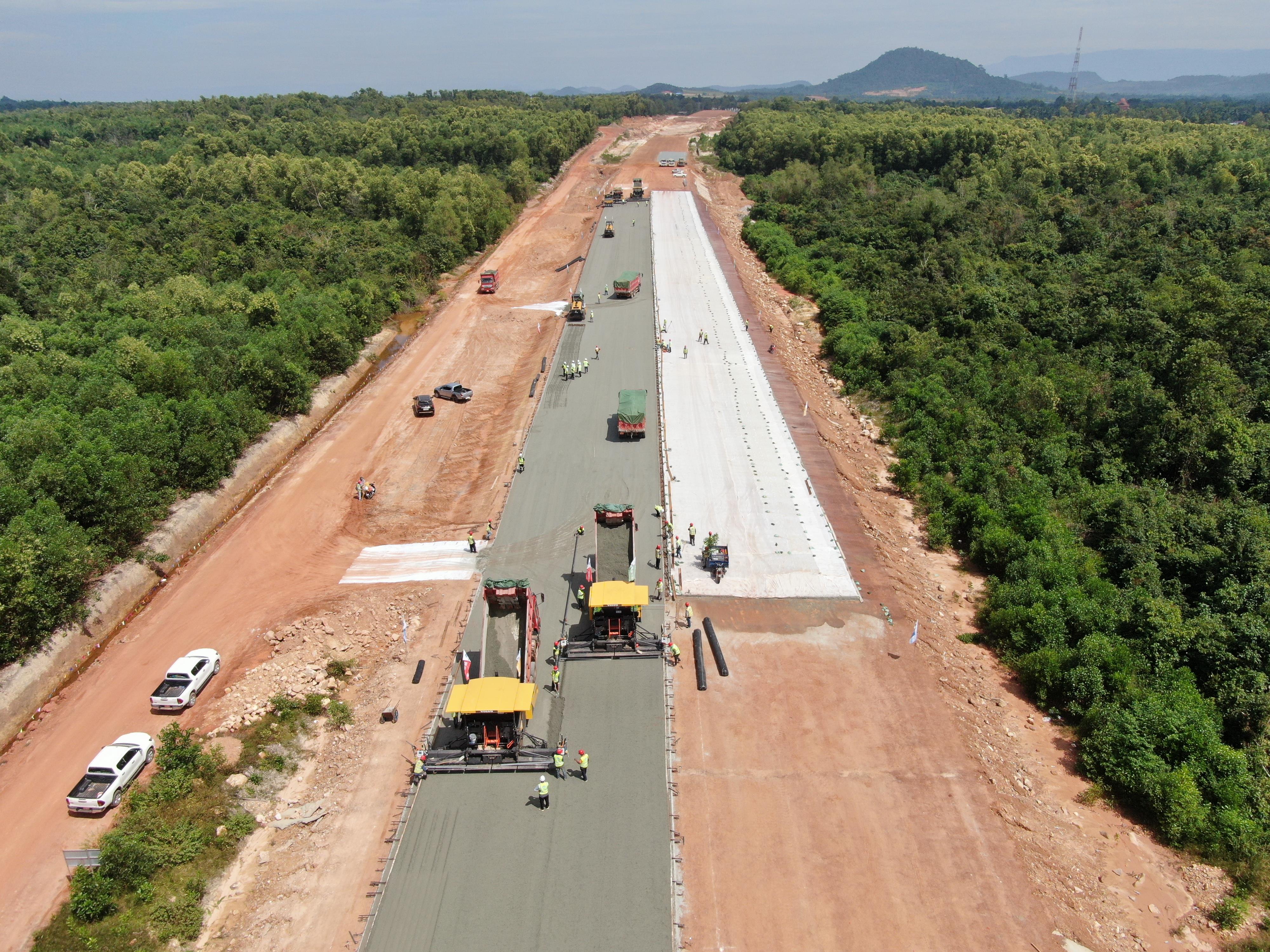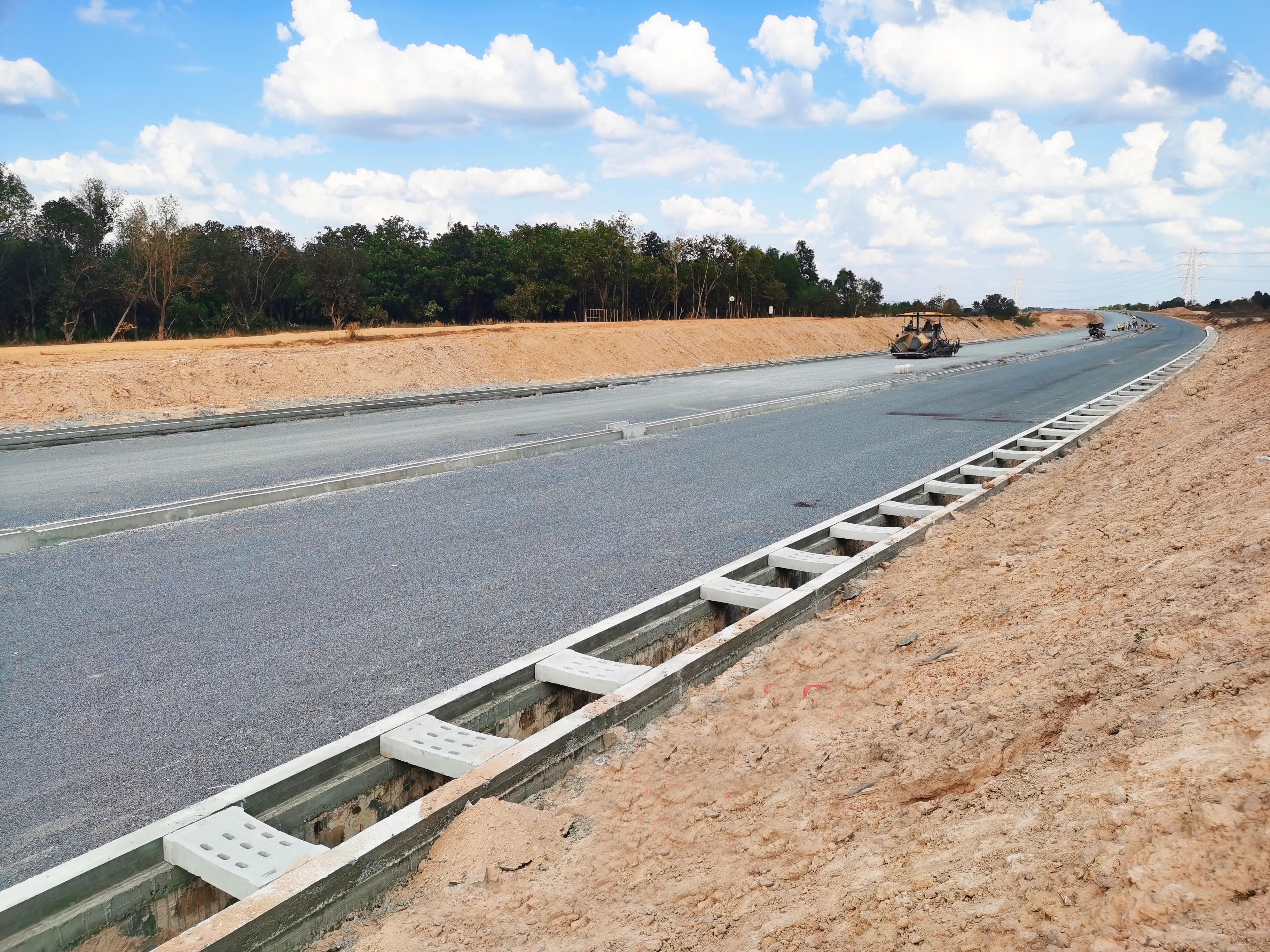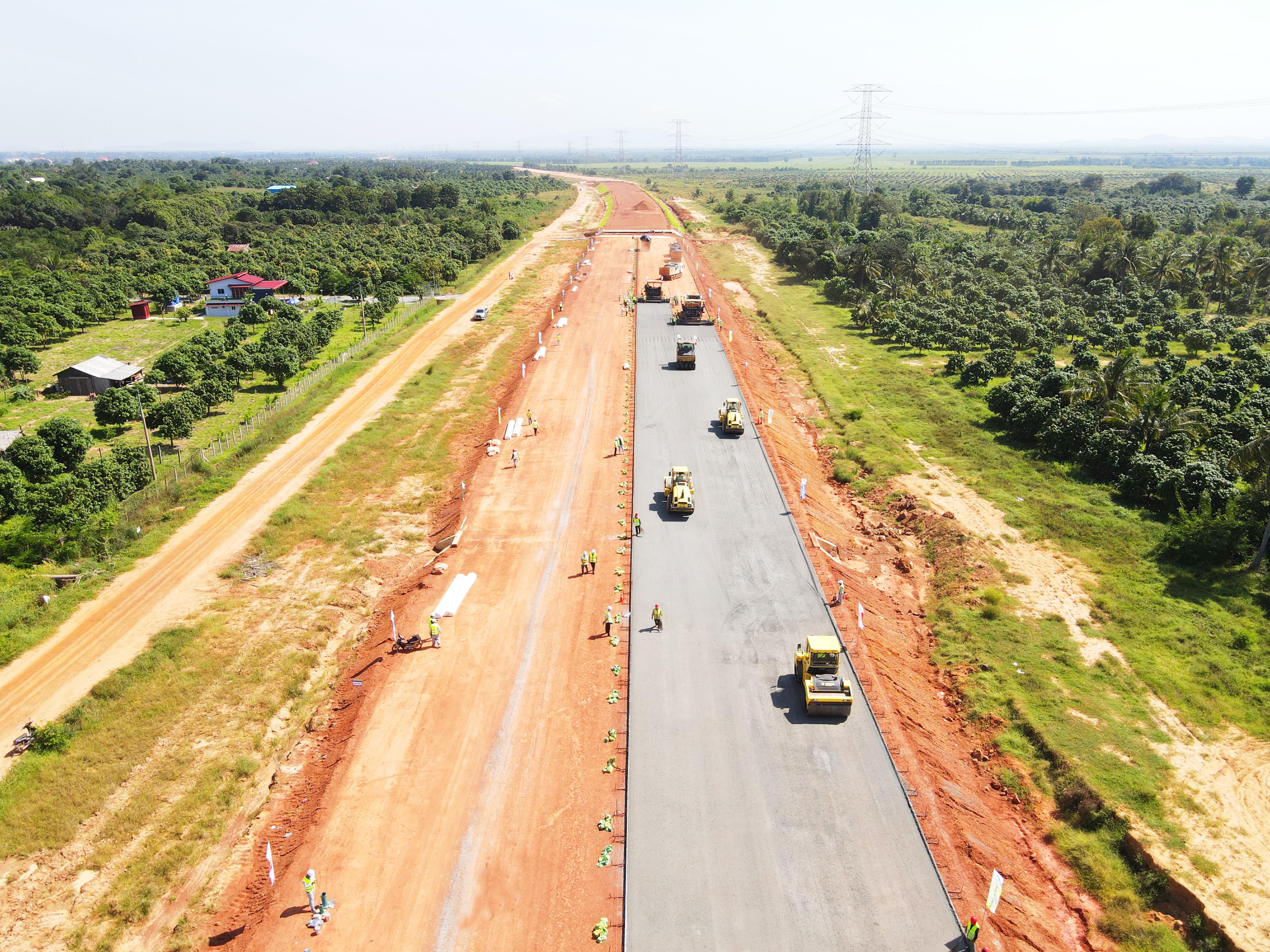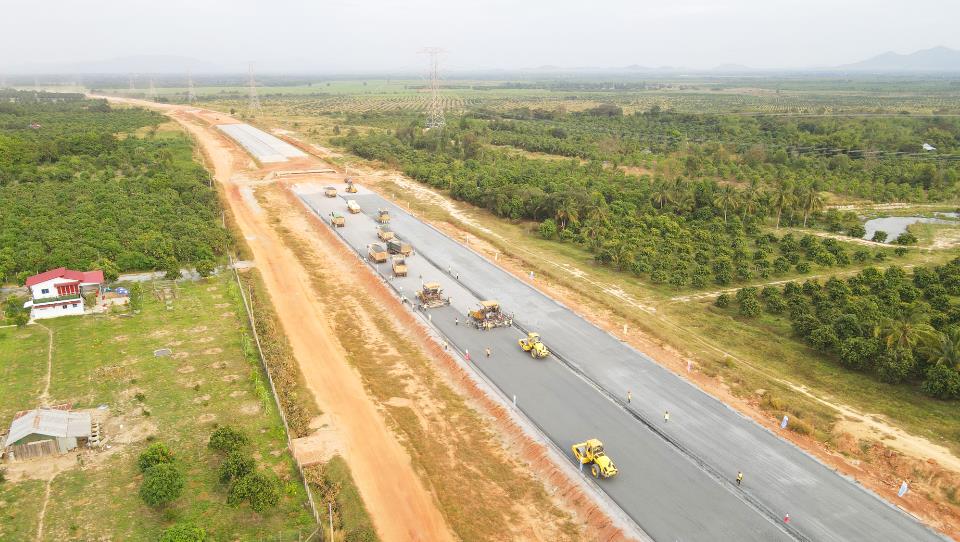Phnom Penh (FN), Apr. 12 – With shuffling sounds, a batch of freshly produced stone was dumped to the ground. Before flying dust made its way out of the window, a giant «vacuum cleaner» over the plant sucked the dust into a sewage sedimentation tank. This is a process in Shenghua Quarry in south Cambodia's Kampong Speu Province - the first quarry equipped with dust collectors to produce crushed stone for the Phnom Penh-Sihanoukville Expressway (PPSHV Expressway).
Apart from processing stone, China Road and Bridge Corporation, the contractor of the project, has deployed multiple technologies and equipment for the eco-friendly construction of the project.
At the quarry, the production line is enclosed, with dust collectors installed over the plant to suck out the dust and discharge it to the sewage sedimentation tank. The precipitated sludge can be used for the reclamation of mines. Meanwhile, the enclosed structure of the plant significantly reduces noise.
Zeng Feng, deputy chief engineer of the expressway project, said the quarry is required to install dust collection equipment, which can produce cleaner aggregates, ensure the quality of mixtures for asphalt pavements, greatly reduce dust emission and protect the local environment.
The Phnom Penh-Sihanoukville Expressway is built on a build-operate-transfer basis. After completion, it will be the first-ever expressway of Cambodia, linking the capital Phnom Penh to the largest seaport province of Preah Sihanouk. The trip will just take two hours, compared with five hours at present.
Environmentally-friendly technologies are applied to build a «green expressway» and pursue sustainable development, Hu Zhaoguang, general manager of the expressway project, said Saturday.
He added that the expressway will not only boost the Cambodian economy, but also lead the «green trend» in the infrastructure industry to protect Cambodia's environment.
The Kirirom National Park is located 60 km southwest of Shenghua Quarry, with green forests flourishing on both sides of a national road, where the PPSHV Expressway Project Section 3 is being implemented. Liu Jianjun, manager of Section 3, told Xinhua on Saturday that in order to protect vegetation and wildlife habitats, the construction team has carried out field investigations to avoid the potential environmental destruction of protected areas.
The company is also making efforts to restore the environment and minimize the impacts of the construction, Liu added.
Generally, the expressway is enclosed with a wire mesh fence. If animals run into the wire mesh, however, they will easily get injured. As the PPSHV Expressway stretches across the natural reserve, home to many wild animals, the constructors added shields along the wire mesh fence of 21 km as a kind of protection, said Lin Ronggang, the designer representative.
«In addition, a great investment was made to build special passageways for animals to ensure their free migration. After completion, small animals like squirrels and big ones like Asian elephants all can pass through,» Lin said.
Furthermore, the project has also included building noise barriers and noise reduction forests for all the 44 noise-sensitive areas along the expressway such as temples and schools.
With its experience in environmental protection on Chinese construction sites, the company is setting a new benchmark in the Cambodian construction industry. Li Gangliang, deputy head of the project's Ecological Protection Leading Group, said the Chinese and Cambodian employees have adopted a set of environmental protection measures, involving the treatment of waste water, dust control and noise prevention.
Kong Sareach, chairman of a commission under the Cambodian Senate, spoke highly of the PPSHV Expressway Project in terms of its respect for local culture and customs as well as its efforts regarding environmental protection, stressing that many of its practices should be promoted throughout the Cambodian infrastructure industry.
Hu, the leader of the project, hopes to make this expressway project an example of green development, as well as an embodiment of the harmony between man and nature.
=FRESH NEWS



